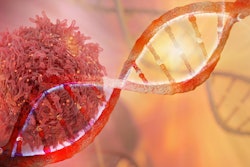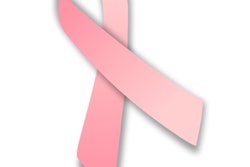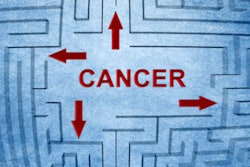Overall cancer mortality continues to decline, but incidence rates are up, according to a January 17 report by the American Cancer Society (ACS).
The report shows that there have been more than four million fewer deaths from cancer in the U.S. since 1991. However, it also showed increased incidence for six of the top 10 cancers as the projected number of new diagnoses is over two million for the first time.
“I think we’re all grappling with what the environmental factor that is changing the cancer incidence and mortality among the young," said ACS chief scientific officer William Dahut, MD, at a press conference.
ACS researchers compiled the most recent data on population-based cancer occurrence and outcomes using incidence data collected by central cancer registries through 2020. They also compiled mortality data collected by the National Center for Health Statistics through 2021.
The investigators found that breast cancer remains the leading cause of death in women under the age of 50, with 2,251 deaths reported in 2021. Also, colorectal cancer has moved up to being the leading cause for younger men, as well as the second leading cause for younger women under 50 years old.
The colorectal cancer findings are alarming, said Ahmedin Jemal, PhD, ACS senior vice president for surveillance and health equity science and senior author of the study, in the press conference. He added that some strategies for addressing this trend include increased screening uptake in people ages 45 to 49, as well as further investigation about why this cancer is rising in incidence.
While cancer screening technologies such as mammography for breast cancer and low-dose CT (LDCT) for lung cancer have improved over the decades, Dahut said that “in general,” the cancers evaluated in the ACS report are not those that have routine screening for, such as liver and pancreatic cancer. He added that the ACS has not seen changes in screening rate over time for postmenopausal breast cancer.
“I think screen detection is certainly part of it, but we are concerned about the cancers we know are driven by obesity and by human papillomavirus [HPV], and those over the age of 30,” he said.
Other highlights from the report include the following:
- Cervical cancer incidence rates are decreasing in women in their 20s, who were first to receive the HPV vaccine, but increased in women ages 30 to 44 by 1.7% per year from 2012 through 2019. In 2021, HPV vaccination coverage in adolescents ages 13 to 17 ranged from 33% in Mississippi to 79% in the District of Columbia.
- Cancer incidence in children has stabilized, although rates continue to increase among adolescents ages 15 to 19. This increase includes a greater than 4% per year rise in thyroid cancer, which the ACS said is likely driven by overdiagnosis.
- Mortality rates continue to increase by 2% per year for uterine corpus (endometrial) cancer. The death rate is now two times higher in Black women (9.1 per 100,000) than in white women (4.6 per 100,000).
- The proportion of diagnoses in people who are middle-aged (50 to 64) increased from 25% in 1995 to 30% between 2019 to 2020, whereas the proportion 65 years and older decreased from 61% to 58%, despite both age groups growing in the general population. The ACS said this shift reflects decreases in incidence of prostate cancer and smoking-related cancers in older adults, as well as increased cancer incidence in people born after the 1950s because of higher obesity and other yet unknown factors.
The report also showed evidence of cancer disparities. Compared with white people, mortality rates are two times higher for prostate, stomach, and uterine corpus cancers in Black people and for liver, stomach, and kidney cancers in Native American people.
As for how the COVID-19 pandemic impacted cancer trends, the ACS reported a lower cancer incidence rate in 2020 compared with 2019. Rebecca Siegel, ACS senior scientific director of surveillance research and the report’s lead author, said in the conference that this was due to the temporary closure of cancer screening facilities.
“What studies have shown is that there is a larger drop for earlier-stage cancers, in-situ cancers, and early-stage disease,” Siegel said. “Many of those cancers didn’t get detected in 2020 as they would have. We have not seen yet if it will take time for more advanced diseases to be diagnosed, and this will happen gradually. What will take even more time is seeing the impact on mortality.”
Dahut said that lifestyle choices people can take to help lower cancer risk include eliminating tobacco use, getting their HPV vaccination, exercising to prevent obesity, and limiting alcohol use.
The ACS report data can be found here. It also contains a special section titled “Cancer in People Who Identify as Lesbian, Gay, Bisexual, Transgender, Queer or Gender-nonconforming (LGBTQ+).”



















